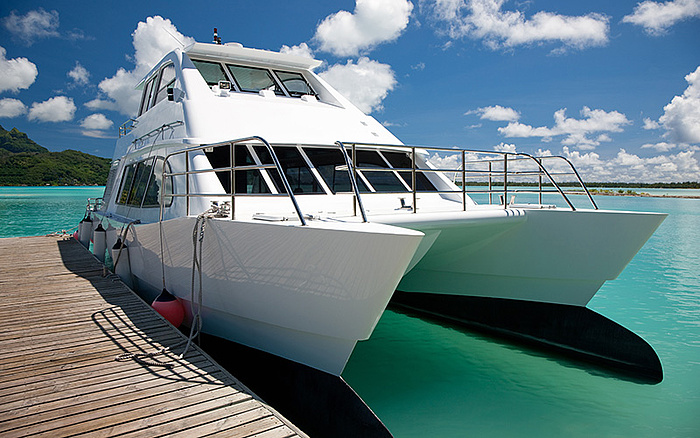
The deep blue of Intellectual Property
A patent can only be infringed in those jurisdictions where it is enforced. Sounds simple enough. But more than 70% of the Earth's surface is covered by water, so what regulations apply there? How far does patent protection extend into (and under) the sea, and what happens when a ship and its cargo enter and leave these jurisdictions?
"Whenever I find myself growing grim about the mouth; whenever it is a damp, drizzly November in my soul […] then, I account it high time to get to sea as soon as I can." Melville's character of Ishmael may have been many things; sailor, whaler, philosopher, but he was probably not a patent owner; otherwise, he might have preferred a simpler life on terra firma. It is time to chart some of these idiosyncratic legal waters to ensure safe passage for Intellectual Property (IP) assets.
Where does patent jurisdiction end?
In order to navigate confidently through the topic of jurisdictional limits, we first need to understand four terms as defined by the United Nations Convention on the Law of the Sea ("the Convention"), signed in 1982. The first is the "baseline," which is the low-water mark from which the range of a country's marine interests is measured. Next is the "territorial sea." Under the Convention, sovereign rights of coastal states extend 12 nautical miles (roughly 22 km) out from the baseline, making the territorial sea the minimum extent of that nation's patent enforcement regime and its legal jurisdiction more broadly.
Over an area extending an additional 12 nautical miles beyond the territorial sea, referred to as the "contiguous zone," a nation may take actions necessary to "prevent infringement of its customs, fiscal, immigration or sanitary laws and regulations within its territory or territorial sea." In other words, if a state wishes to enforce its patent legislation within the contiguous zone as a matter of customs control, it may.
Finally, there is the "exclusive economic zone (EEZ)," generally extending a maximum of 200 nautical miles (around 370 km) from the baseline. Here, a coastal nation has sole exploitation rights to natural resources on or near the seabed, including energy generation, but otherwise limited control as these areas are considered international waters. EEZs do not apply to the resources of the water column or surface.
Beyond the EEZs lie the "high seas" over which no nation can exert control, meaning that approximately half of the Earth's surface belongs to no jurisdiction at all.

The region closest to shorelines is far from a no man's land, and the finer points of measurement can be hotly contested. One such dispute between Romania and Ukraine in the Black Sea was settled by the International Court of Justice as recently as 2004.
Laying claim
Not all coastal states exercise their prerogatives under the Convention in the same way. Despite maintaining the largest (by tonnage) and most powerful military fleet in the world, the United States has declined the right to extend its patent sovereignty to its contiguous zones and EEZs. This is because all U.S. statutes are enacted on what is called the "presumption against extraterritoriality." Simply put, unless explicitly stated, U.S. laws are assumed to apply only within U.S. territory. Added to this, in March 1983, President Ronald Regan proclaimed that the EEZs remain "an area beyond the territory and territorial sea of the United States." Therefore, unless specific legislation is introduced to extend patent sovereignty to these zones, the farthest limit of the United States' jurisdiction in this regard is and will remain its territorial seas.
However, that is not the full story, but we will come back to that shortly.
Across the Atlantic Ocean, the United Kingdom takes a very different stance when it comes to patent jurisdiction. Longstanding naval traditions and, crucially, offshore oil fields encourage the island nation to extend the reach of patent legislation into its EEZs and designated areas of seafloor. The Petroleum Act of 1998 specifically mentions that installations to explore or exploit natural resources are subject to the UK government's authority. This means that oil rigs, undersea survey vehicles and drilling equipment can all be subject to UK patent jurisdiction outside of the country's territorial seas if their use applies to a claimed zone of the seabed. This extension can be seen in practice in Rockwater v Coflexip SA [2003].
Recently, the United Kingdom's Royal Navy intensified patrols to defend the country's vital offshore energy infrastructure. This was in direct response to a series of explosions in the EEZs of Sweden and Denmark on September 26, 2022, that ruptured both the Nord Stream and Nord Stream 2 undersea gas pipelines from Russia to Europe.

A remotely operated underwater vehicle (ROV), bristling with advanced equipment, is the ideal tool for a wide variety of undersea tasks, from exploration and surveys to construction, repair and even rescue. They are often painted bright yellow to maximize their visibility in deep or murky water.
Just passing through
An oil rig is one thing, but ships are nothing if not mobile. What happens if a vessel enters a jurisdiction where an invention it is carrying or utilizing is subject to patent protection?
Let us assume a ship is entering territorial waters. If the patented subject matter is contained in the ship's cargo and the article is not destined to be sold, distributed or used in the covered jurisdiction, there is no infringement. Global trade would grind to a halt if every ship were to be detained and searched by customs officials for potentially patent-infringing goods that are simply transiting.
Removing as many obstacles to international trade as possible is the objective underpinning the intersection of patent and maritime law. This principle also applies when a ship itself, rather than its cargo, infringes a patent. In 1883, the Paris Convention for the Protection of Industrial Property defined many of today's standards of cross-border IP protection while including crucial exemptions for sea, land and air vehicles. Namely, a patent is not infringed by: "the use on board vessels of other countries of the Union of devices forming the subject of his patent in the body of the vessel, in the machinery, tackle, gear and other accessories, when such vessels temporarily or accidentally enter the waters of the said country, provided that such devices are used there exclusively for the needs of the vessel […]."
There is just one little problem: How long is "temporary?"
Defining the length of a piece of string
Most national courts and legislators have interpreted this article by applying the spirit of the law as broadly as feasible. As a result, no infringement occurs so long as a visiting, patent-infringing vessel enters a covered jurisdiction solely to engage in international commerce and then leave — even if it does this several times a day. Here it is important to note that the same could not be said if the ship were to conduct trade between domestic ports in the covered jurisdiction.
For an example of the international commerce exemption in action, we can look at when Stena Rederi Aktiebolag accused Irish Ferries of patent infringement with respect to elements of a ship's hull. Stena did not hold a patent for its hull design in Ireland but did in the United Kingdom, so the company sued the ferry operator on account that the ship in question, a catamaran named the Jonathon Swift, routinely entered UK territorial waters to service a route between Dublin and Holyhead. The case eventually came before the Court of Appeal (England and Wales), which held in 2003 that while Stena's UK patent was valid, the Jonathon Swift did not infringe it since the ship fell under the exceptions of the Paris Convention and the United Kingdom's own Patents Act 1977.

A catamaran's twin-hull design grants it improved speed and fuel efficiency without sacrificing stability, making it ideal for short-haul passenger trips. However, it is less suited for heavy freight due to its reduced internal carrying capacity and greater susceptibility to bad weather.
"The fact that the same journey is repeated over and over again does not alter the fact that each entry into our waters is designed to be short-lived."
Ultimately, Stena's biggest mistake might have been not acquiring patent protection in Ireland, where the Jonathan Swift's home port lay.
How to defend against patent pirates
The most suitable IP-filing strategy depends on the type of inventions you are trying to protect. As we have seen, it is wise to seek patent protection for technologies used in undersea exploration and drilling in those countries with significant offshore oil reserves. On the other hand, if you have developed an innovative ship design, it would be best to patent it in the major shipbuilding nations, principally China, South Korea and Japan, or in countries with strategically important ports.
Finally, receiving a patent in a country where a ship is registered guards your innovation against infringement onboard a vessel while it is on the high seas. Under Article 92 of the United Nations Convention on the Law of the Sea, "[s]hips shall sail under the flag of one State only and save, in exceptional cases expressly provided for in international treaties or in this Convention, shall be subject to its exclusive jurisdiction on the high seas." And although the United States is not a signatory of this agreement, there exists a compelling body of precedent that U.S. patent laws "extend[] to the decks of American vessels on the high seas, as much as it does to all the territory of the country, and for many purposes is even more exclusive," Gardiner v Howe, 1885.
The tides of international patent law are slow to turn, but turn they do. And though nothing is truly static in the world of IP, for now, our drama is done.
A version of this article was first published in WIPR Issue 4, 2022.
Filed in

Take an in-depth look at medical devices and how IP will foster, inform and protect more innovative healthcare experiences.



